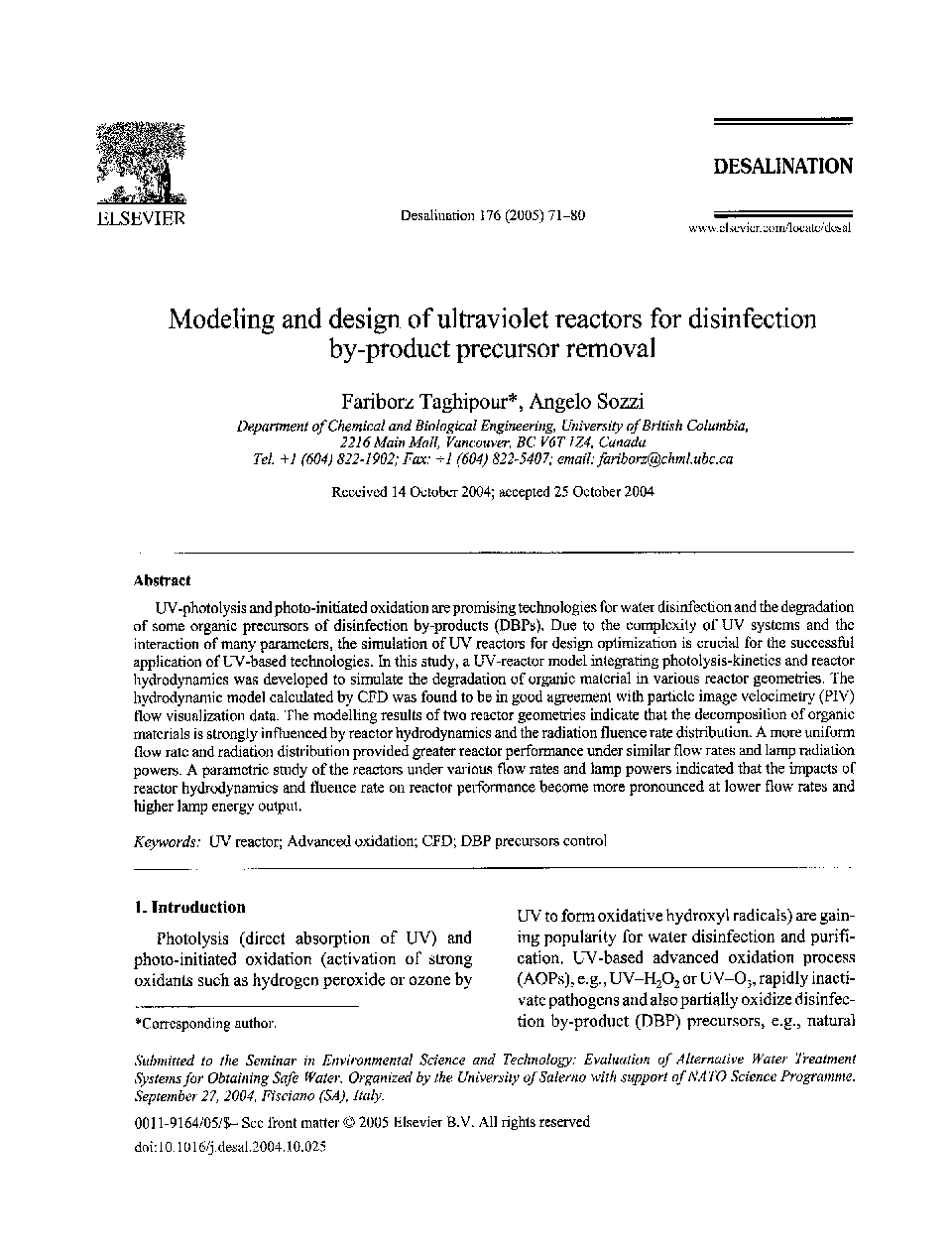| Article ID | Journal | Published Year | Pages | File Type |
|---|---|---|---|---|
| 9681204 | Desalination | 2005 | 10 Pages |
Abstract
UV-photolysis and photo-initiated oxidation are promising technologies for water disinfection and the degradation of some organic precursors of disinfection by-products (DBPs). Due to the complexity of UV systems and the interaction of many parameters, the simulation of UV reactors for design optimization is crucial for the successful application of UV-based technologies. In this study, a UV-reactor model integrating photolysis-kinetics and reactor hydrodynamics was developed to simulate the degradation of organic material in various reactor geometries. The hydrodynamic model calculated by CFD was found to be in good agreement with particle image velocimetry (PIV) flow visualization data. The modelling results of two reactor geometries indicate that the decomposition of organic materials is strongly influenced by reactor hydrodynamics and the radiation fluence rate distribution. A more uniform flow rate and radiation distribution provided greater reactor performance under similar flow rates and lamp radiation powers. A parametric study of the reactors under various flow rates and lamp powers indicated that the impacts of reactor hydrodynamics and fluence rate on reactor performance become more pronounced at lower flow rates and higher lamp energy output.
Keywords
Related Topics
Physical Sciences and Engineering
Chemical Engineering
Filtration and Separation
Authors
Fariborz Taghipour, Angelo Sozzi,
